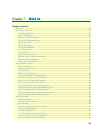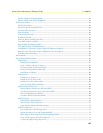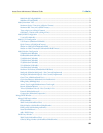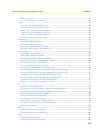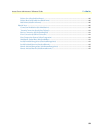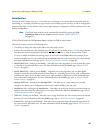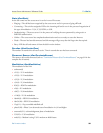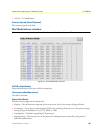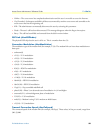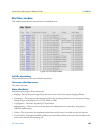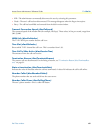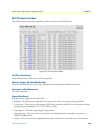
Dial In main window 56
Access Server Administrators’ Reference Guide 7 • Dial In
State (diactState)
As the call comes into the access server it can be in one of five states.
• Ringing—The call has been recognized by the access server and is in process of going off hook.
• Connecting—The unit has assigned a DSP to the incoming call and is now in the process of negotiation of
the type of modulation—V.34, V.32, ISDN, or 56K.
• Authenticating—The access server is in the process of verifying the users passwords by using static or
RADIUS authentication.
• Online—The access server has completed authentication and we are ready to access the Internet.
• Dead—The user has been disconnected and this message will go away after the linger time has expired.
• Bury—Kill the call and remove it from the dial-in main window.
Duration (diactSessionTime)
The number of seconds this call was/is active. Time in seconds the user has been connected.
Disconnect Reason (diactTerminateReason)
The reason a call was disconnected (refer to “Termination Reason (diactTerminateReason)” on page 91 for the
complete list of reasons).
Modulation (diactModulation)
The modulation of the link:
• unknown(0)
• v21(1)—V.21 modulation
• v22(2)—V.22 modulation
• v32(3)—V.32 modulation
• v34(4)—V.34 modulation
• k56(5)—K56 Flex modulation
• x2(6)—X.2 modulation
• v90(7)—V.90 modulation
• v110(8)—V.110 modulation
• isdn64(9)—ISDN 64 modulation
• isdn56(10)—ISDN 56 modulation
• 12tp(11)—12tp tunnelled multilink call
• phase2(20)—Phase 2, an advanced state of modulation in v34 and higher
• answerack(21)—acknowledgement phase of modulation
• V92(22)—V.92 modulation
• moh(23)—Modem is using V.92’s modem-on-hold feature



